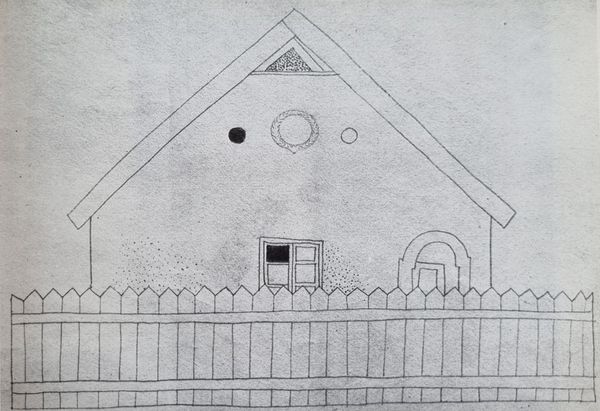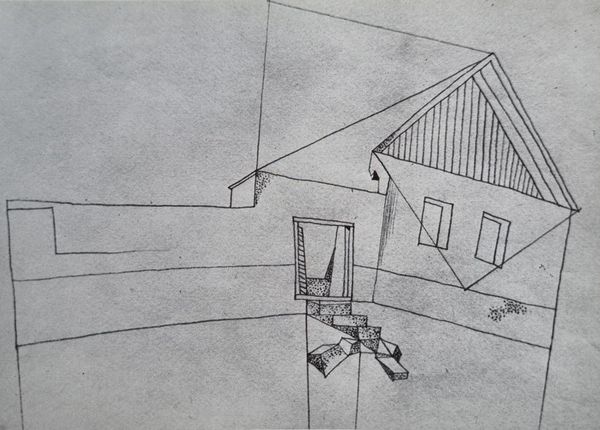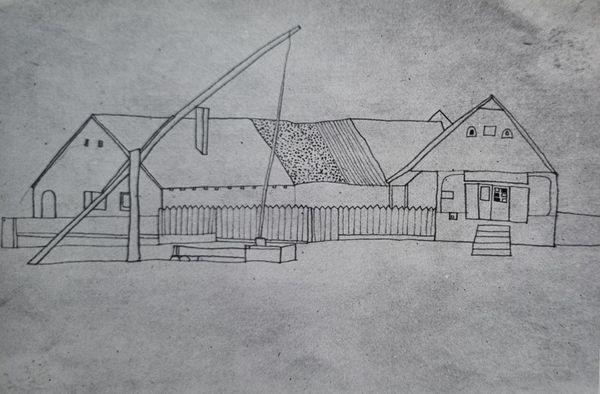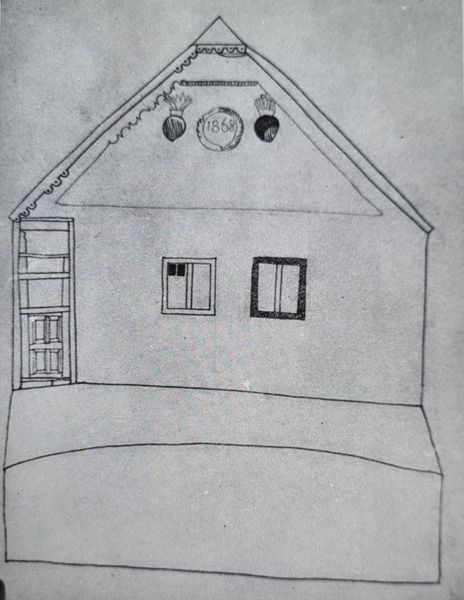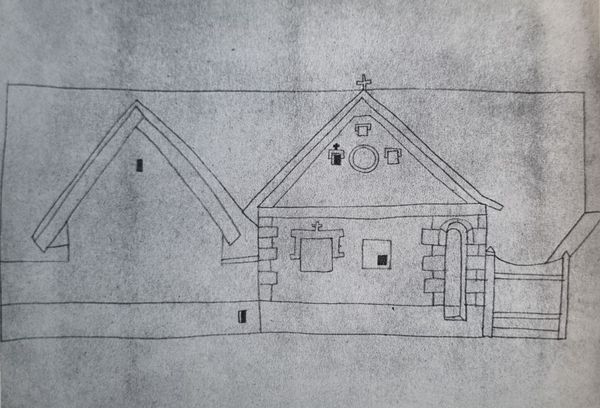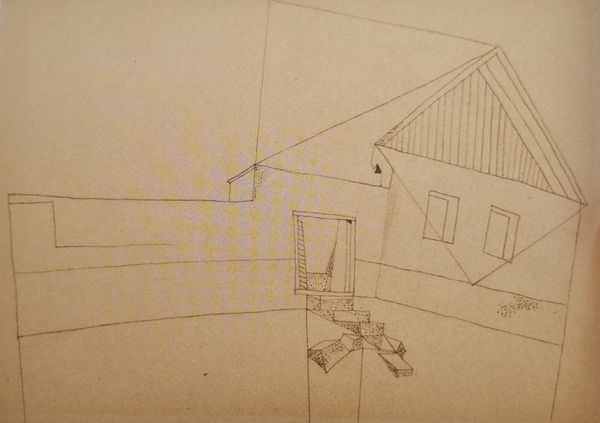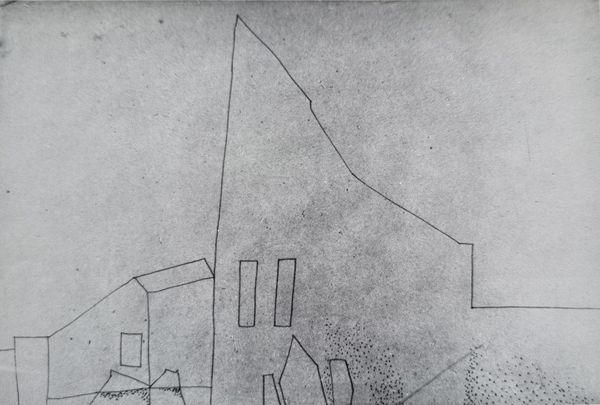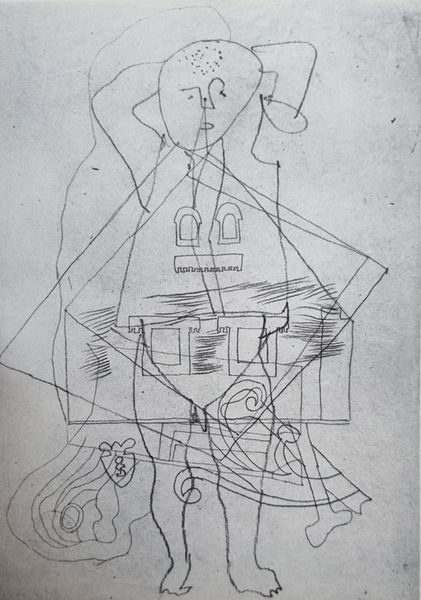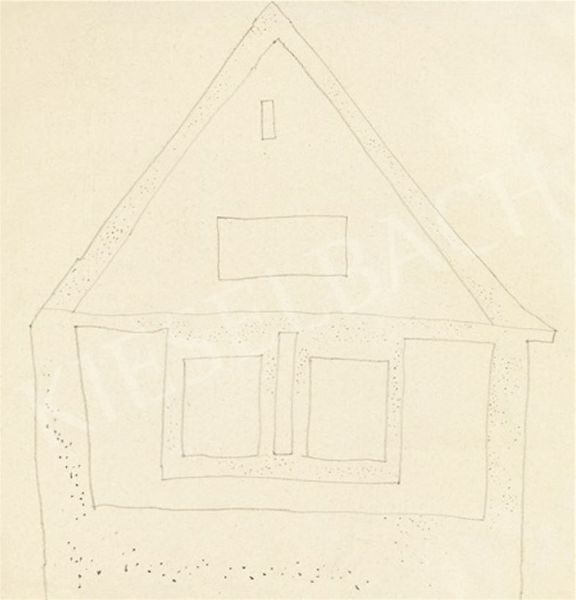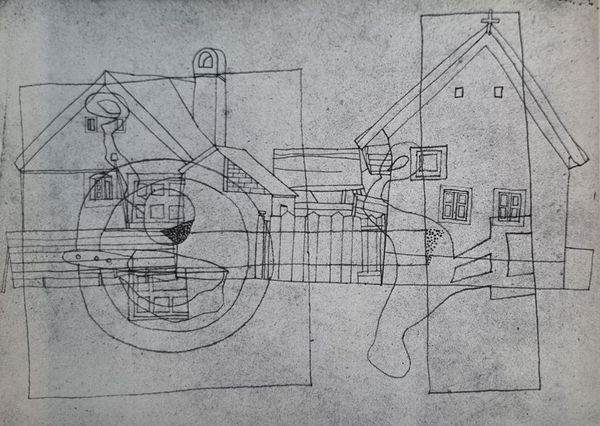
drawing, paper, pen
#
drawing
#
comic strip sketch
#
hand drawn type
#
hand lettering
#
paper
#
personal sketchbook
#
linework heavy
#
idea generation sketch
#
sketchwork
#
geometric
#
sketchbook drawing
#
pen
#
cityscape
#
surrealism
#
small lettering
#
initial sketch
Copyright: Public domain
Curator: "Plate Still-life above Houses" by Vajda Lajos, completed in 1936. The piece employs pen and ink on paper. At first glance, what strikes you about it? Editor: Immediately, this image has a certain unease about it, doesn't it? The juxtaposition of these mundane objects floating above those neatly ordered buildings feels discordant, almost surreal. Curator: Indeed. Vajda's artistic vision often interwove reality with symbolic overlays. The "still-life," rendered above the architectural sketches, invites us to decode his intended narrative, tapping into archetypal imagery and its reverberations. Consider how food is central to human rituals; placing this meal over a landscape... it has potential spiritual implications. Editor: From a structural point of view, observe the artist's heavy use of linework. It almost seems intentionally unrefined. It adds an energy to the drawing. A looseness, you could say. You know, breaking free from formal constraint in art production often reflects wider socio-political tensions of that time. Curator: Absolutely. During the 1930s, across Europe, such techniques served as potent emblems of resistance against prescribed cultural standards, especially through artistic means. This kind of free approach would have stood in sharp contrast to increasingly oppressive political climates. What kind of shared memories was he attempting to preserve, I wonder? Editor: Memories indeed. Notice also that these homes lack warmth. Are those empty windows? If you analyze his technique— the layering of transparent, overlapping forms—it becomes clear that spatial relationships aren't working the way they naturally do, giving us this slightly alien, distorted feeling. Curator: The transparency of these overlaid elements allows for a dynamic interplay between what is external versus what is within: think visible memory influencing perspective as though external experiences permeate inner landscapes constantly shifting how individuals understand concepts of "home". Perhaps his exploration transcends the visual to reveal something fundamental about existential belonging itself. Editor: It’s an intriguing tension—the clear precision of his lines used to depict objects which feel anything *but* grounded. After a while, a sense of mystery prevails—not the peace you expect from village scenery with plates, knives, and meals on a plate. It's an unresolved composition. Curator: An unsettling combination perhaps holds the key into a deeper contemplation concerning communal existence, and Vajda Lajos definitely gives plenty of food for consideration through each element carefully laid to communicate on many possible levels to those observing!
Comments
No comments
Be the first to comment and join the conversation on the ultimate creative platform.
